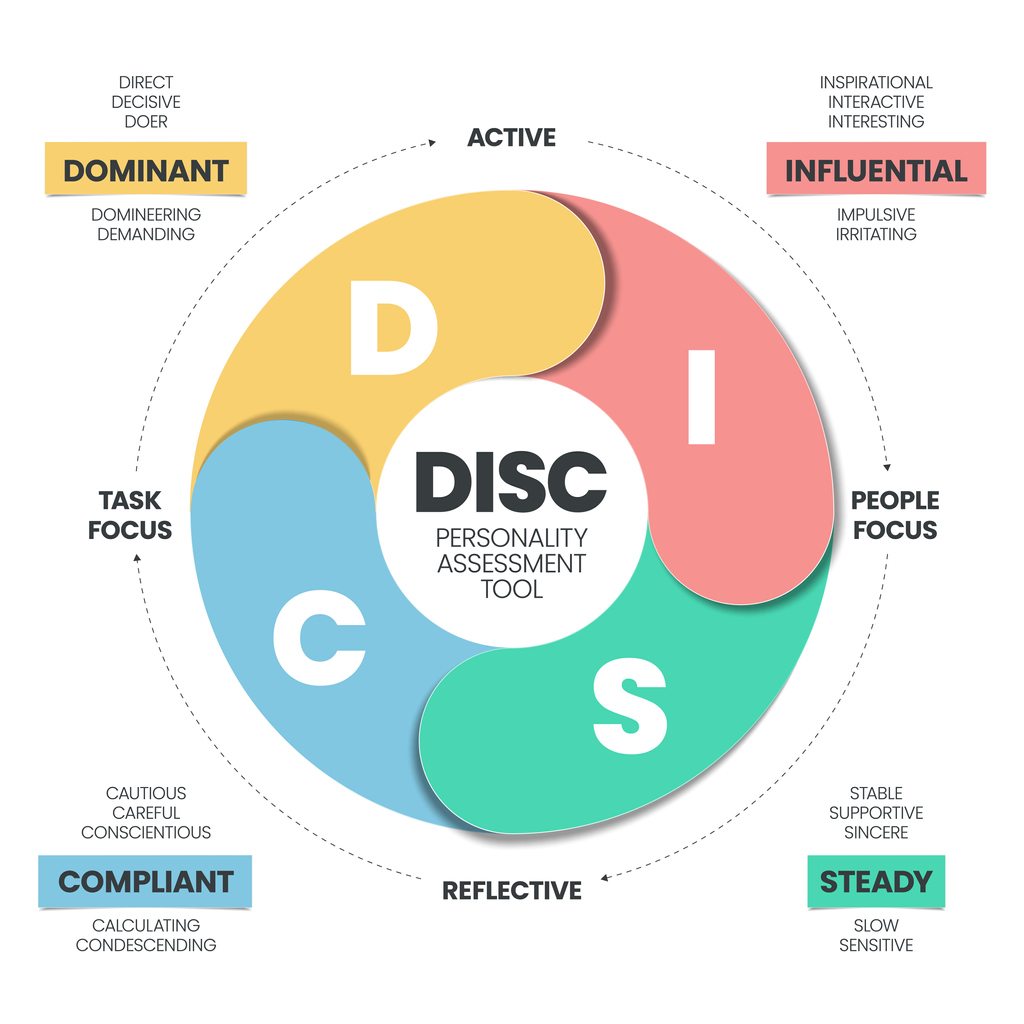How to resolve conflict in a team: Step-by-step with examples
There are all sorts of different personality types woven into the fabric of every single workplace. While certain personality traits can make individuals a perfect fit for their roles, the same differences can also cause workplace conflicts and disagreements.
Whether you’re struggling to resolve conflict on your team or trying to manage healthy conflict productively, there are strategies available to help. After all, the last thing anybody wants to deal with is regular disagreements at work.
Here, we’ll guide you through the ins and outs of workplace conflict and introduce you to some effective strategies for creating positive outcomes from common workplace disagreements.
Quick Links
- Types of workplace conflict
- Common causes of conflict in a team
- Exploring conflict management techniques
- Team conflict resolution examples
Types of workplace conflict
The first step to solving workplace disagreements is understanding the various conflict types you should expect to encounter during your work life.
There are three main types, which we’ll delve deeper into below.
Task-based conflict
Conflict relating to workplace tasks can arise for several reasons. From differing expectations to unclear responsibilities, task-based disagreements within teams are usually centred around clashing tasks delegated to various employees.
Relationship-based conflict
Relationship-based conflicts are most likely a result of clashing personality types. Differing communication styles and working preferences can lead to these people disagreeing with each other more often.
For example, a manager with a direct, self-assured personality type might clash with an employee who’s more emotion-led simply due to their differing approaches.
Value-based conflict
Value conflict can arise from differences in identities and values. This can often include different ideas about work-life balance and working styles. Sometimes personal beliefs, such as politics, can even come into play.
A good example would be when one individual values their work-life balance more than another, and this causes issues around workload schedules and deadlines.
Common causes of conflict in a team
Workplace conflict can occur for several different reasons. Below, we’ll explore four of the most common causes of conflict.
Unclear expectations
When employees aren’t clear on their job roles and responsibilities or how these fit in with the rest of the team, it can cause (easily avoidable) disagreements. For example, if you usually handle the client side of a project but you’re expected to lead it this time, which hasn’t been communicated to you, then this can cause conflicts around who is running the project.
These expectations may be outlined in your contract, for example, regarding your working hours. Others might be task-based, like delivering a report on time. Both expectations can cause issues if they’re not met.
Resistance to change
When changes to the workplace or directly to someone’s workload are implemented, this can naturally cause issues in the workplace. With workloads having a large impact on work-life balance, team members are likely to be protective of their current workload in case it leads to more stress that carries into their personal life.
Resistance to changes of any kind can be a common source of conflict; employees will push back against them or argue why they shouldn’t be implemented, while others push in the other direction.
Poor team communication
A lack of communication is another common cause of disagreements since clarity and direction are usually lacking in these cases. Whether it’s a lack of communication from leaders or amongst team members, productivity and collaboration might be hindered.
Poor communication between managers and team members can cause delays in the completion of tasks and ultimately lead to a higher workload. This causes frustration and conflict between team members and with senior management. All communication and expectations should be delivered promptly with clarity. As a manager, it’s also important to make yourself available to contact if any of your team have further questions.
In cases where the quality of communication is lacking, this can cause frustration about time being used ineffectively.
Lack of trust
In the workplace, trust can be separated into three categories. A manager must have trust in their team, the team must trust their manager, and the team members must trust each other to work together effectively.
When trust is lacking between any of these parties, the team or the manager are likely to withhold information from each other, which could slow down processes or cause the project to fail entirely.
Trust is broken when managers only relay information to senior members of the team, leaving junior members scrambling in the dark. On the other side of the coin, managers can lose trust in their team members if they’re not kept updated on timelines or team members continually perform poorly.
Rewards can also be a contentious issue when it comes to trust. If your organisation claims to value teamwork, then teamwork should be rewarded. If individual performances are usually in the spotlight, it can cause team members to mentally check out.
Differences in personality
Just like in any aspect of your life, clashes in personality can cause significant problems. For the most part, adults can remain professional with each other even if they wouldn’t usually socialise outside of work, but placing team members who actively dislike each other on the same team likely won’t lead to anything good.
Remember, as a manager, your role is to get the most out of your team, not to play peacekeeper. To manage workplace conflict, sometimes you must consider how big an impact this personality clash will have on the rest of the team.
Exploring conflict management techniques
Looking for some examples to see how different workplace conflict scenarios could be solved? Below, we’ll go through some common workplace conflicts and the methods and strategies you could use to resolve them.
Conflict management styles
According to the Thomas-Kilmann Conflict Model, there are five conflict management styles. These include:
Accommodating
Those managing under this style will put the concerns of others above their own, which can help to build trust within the team.
Avoiding
As the name suggests, managers adhering to this style will avoid conflict rather than do anything about it, which can exacerbate the issue further down the line.
Compromising
A compromising style will attempt to appease all parties, taking a meet-in-the-middle solution to defuse situations.
Collaborating
Collaborating types will search for a win-win situation where everyone gets the outcome they want. Although this method sounds great, it’s not always possible for everyone to get the outcome they desire.
Competing
A competing style means you’ll push your viewpoint and reject any other until you get your way, which can be great for team members who like clear, unambiguous structure, but can push others towards distrust.
When it comes to solving conflict, there’s not a one-size-fits-all approach. By intelligently using the methods above, managers can get the most out of their team and resolve conflicts quickly and effectively.
To decide which conflict method to use, consider the following:
- How much do you value the issue?
- How much do you value the individuals involved and their opinions/beliefs/concerns?
- Are you fully aware of the consequences each style could have, both positive and negative?
- Do you have the necessary time, energy, and resources to handle the conflict?
Conflict mediation
Sometimes, employing a conflict management style isn’t enough, there needs to be a formal meeting to discuss the issue and possible resolutions; this is called conflict mediation.
Start by gathering the relevant parties, collecting impartial information so you can come to a resolution with as little bias as possible. Encourage all parties to speak professionally, but openly, to ensure that all information is gathered.
Once the meeting has taken place, create a plan to move forward, with regular check-ins to ensure that the conflict has truly been put to bed.
The DISC conflict resolution model
DISC is a four-factor personality model used to classify personalities, made up of four traits:
Dominant
As the name would suggest, people who fall into the Dominance personality trait are likely to be direct and decisive. This can also be interpreted as domineering or demanding of team members.
Influential
Influential personality types inspire members of their team to be creative and hard-working. However, they might be likely to flit from idea to idea, which can be irritating.
Steady
Although it can be seen as a slower way of management, steady managers are stable, supportive and sincere, which can be an incredible asset during crisis periods.
Compliant
Members of this management style are careful, cautious, and conscientious; the exact opposite of influential managers. They can be seen as calculating or condescending because they prefer objectivity.
 Most people will fit into one of these four personality types, although some might find themselves identifying with traits of a secondary personality type. For example, their personality could be a mix of dominance and influence.
Most people will fit into one of these four personality types, although some might find themselves identifying with traits of a secondary personality type. For example, their personality could be a mix of dominance and influence.
Team conflict resolution examples
Creative differences
When creatives have an opportunity to work together, it can provide great opportunities for collaboration and growth. However, strong creative opinions can often cause conflict that halts progress if they aren’t managed properly.
If two creatives on the team are working in collaboration, their ideas about functionality and aesthetics might differ. The project can’t move forward until both agree, and neither seems willing to compromise on their ideas.
As a manager, you’ll need to use active listening skills to understand the concerns of everyone involved. With the end goal for the project in mind, decide whether it would be best to work on this using a compromising or collaborative style.
Work schedule conflicts
As we’ve mentioned, different people will often hold different values, which can include their ideal work-life balance. Whether it’s an issue about managers not scheduling tasks correctly or expecting too much from others, work schedule conflicts can cause issues in your team if you avoid them.
If a manager has been communicating about tasks outside of your usual working hours, this can cause conflict – especially when a manager is requesting that you complete these tasks on top of your usual schedule without any alternatives.
To avoid this, the manager will need to adopt an accommodating conflict management style and consider that their employee doesn’t want to complete the tasks outside their usual working hours. They’ll also need to collaborate to find a way to complete the tasks. This could be through delegation to others or setting a longer deadline.
Employees not meeting expectations
In some cases, employees might not meet your expectations as a manager. From turning work in after deadlines have passed to being withdrawn from the team, there can be many reasons for these types of conflicts.
An employee might not be engaging with the rest of the team on an upcoming project they’re involved in, and they’re handing in tasks relating to it after the agreed-upon deadlines.
Active listening is also important in this case since you’ll need to address why they aren’t getting involved or hitting deadlines. Once the cause has been established, you can work together to get the employee back on track or steer them away from the project, if suitable.
To find out more about careers at SEFE please visit our homepage.
The views, opinions and positions expressed within this article are those of our third-party content providers alone and do not represent those of SEFE. The accuracy, completeness and validity of any statements made within this article are not guaranteed. SEFE accepts no liability for any errors, omissions or representations.







